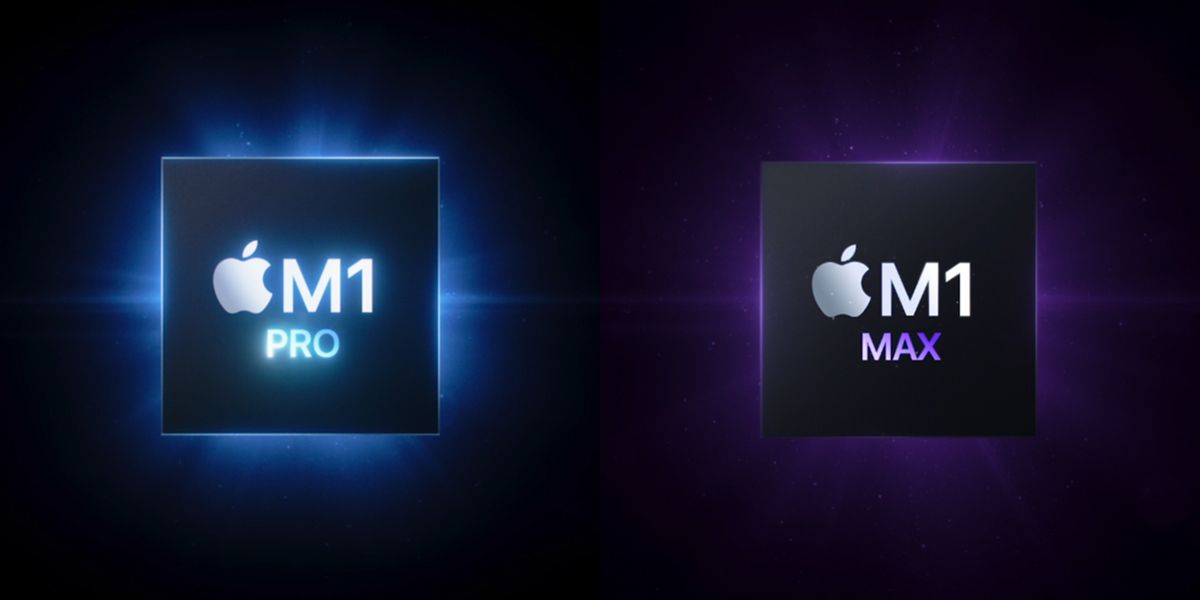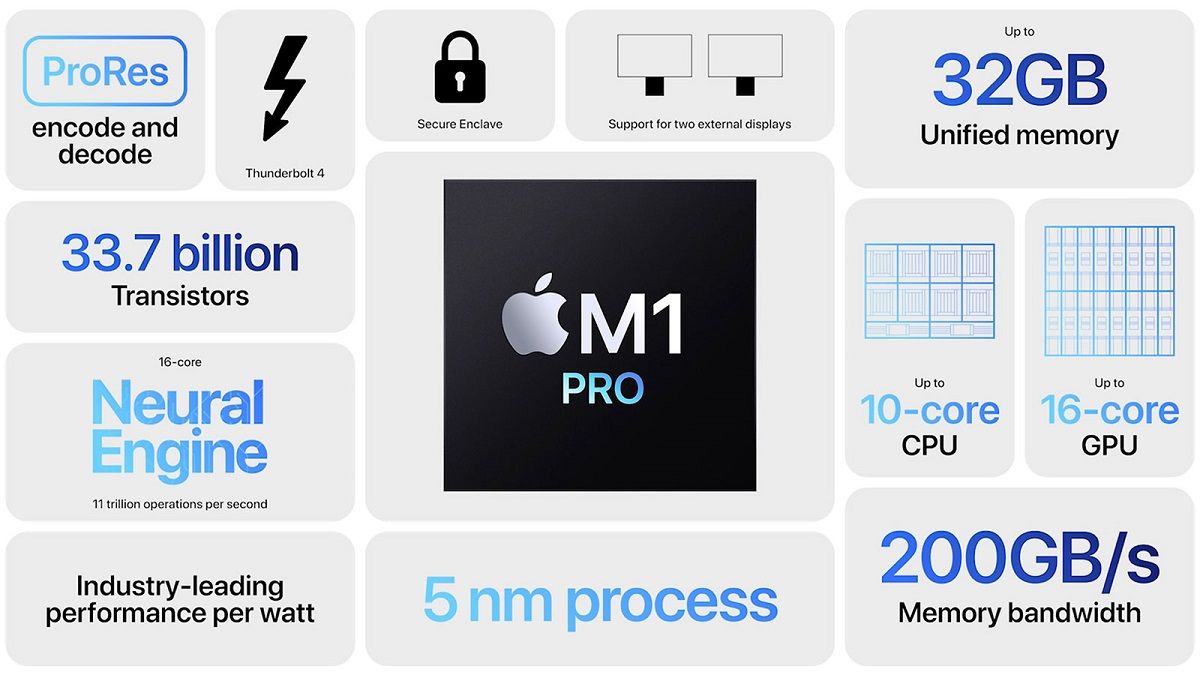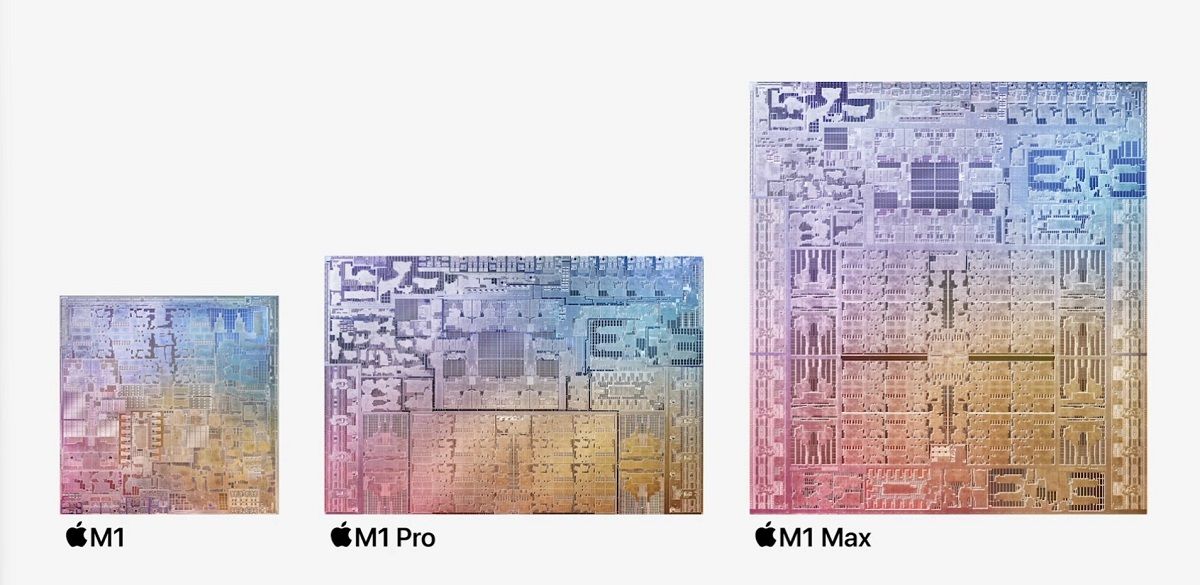Apple transitioned its Mac computers away from Intel to its own chips last year with its M1 chip. Today, the company announced the M1 Pro and M1 Max processors, two custom-built chips to power the next generation of MacBooks and beyond. Both chips are essentially souped-up versions of Apple's first in-house chip. As a new addition to the M1 family, the new M1 Pro and the M1 Max chips pack more punch to power more devices in Apple's Mac portfolio.
Both the M1 Pro and M1 Max chips will be first seen inside the new MacBook Pro models that were launched alongside the new AirPods 3 today. Let's quickly go through all the important specifications to see what kind of performance improvements you can expect from these new chips.
Apple M1 Pro
The Apple M1 Pro is a 5nm chip that features a total of up to 10 CPU cores. Eight of those 10 CPU cores are high-performance cores while two are high-efficiency cores. Additionally, the M1 Pro also features up to 16 GPU cores with 2,048 execution units. This is a notable improvement over the original M1 which had 8 GPU cores in total. In typical Apple fashion, you can say the M1 Pro chip promises up to 70 percent better CPU performance and twice the GPU performance compared to the M1.
Much like the original M1 chip, the memory is still integrated directly into the chip itself. But the new chip supports more RAM, so you're less likely to feel the need to upgrade in future. Apple is offering configurations up to 32GB with a total of 200GB/s bandwidth. The new M1 Pro packs in 33.7 billion transistors, more than two times the amount in M1. While comparing it with the latest 8-core PC laptop chip, the M1 Pro delivers up to 1.7x more CPU performance while using up to 70 percent less power. The same is true for M1 Pro's GPU cores, in which case Apple says they're up to seven times faster than the integrated graphics on the latest 8-core PC laptop chips.
Apple M1 Max
In addition to M1 Pro, Apple also announced the more powerful M1 Max chip. It essentially builds on the M1 Pro to deliver more performance for high-end computing machines in Apple's Mac portfolio. The M1 Max is the largest chip Apple has ever built and it features 57 billion transistors. Just to put it in perspective, that's 70 percent more than M1 Pro and 3.5 times more than M1. It uses the same 10-core CPU as M1 Pro but adds a 32-core GPU instead of 16. According to Apple, it'll have the same performance as high-end discrete graphics, but it'll consume up to 100watts less power. Apple's new 16-inch MacBook Pro will use the M1 Max chip and it can be configured with up to 64GB of memory. The new chip will let you connect up to four external displays to a single device. Apple calls it "the most powerful chip ever built for a pro notebook."
Now with ProRes
Both M1 Pro and M1 Max feature dedicated acceleration for the ProRes professional video codec. In M1 Pro's case, it allows multiple playbacks of multiple streams of high-quality 4K and 8K ProRes video while using very little power. The M1 Max, as expected, takes it a step further to deliver up to 2x faster video encoding than M1 Pro, and features two ProRes accelerators. The 16-inch MacBook Pro can transcode ProRes video in Compressor up to 10x faster compared with the last-gen 16-inch model.
Apple is highlighting how the new chips represent a huge step in its transition to its own silicon. It's worth making a note that Apple isn't getting rid of the original M1 chip, yet. This means you'll also be able to buy the M1-powered 13-inch MacBook Pro. It's only a matter of time till we see Apple's complete transition to its own silicon and we can't wait to see how things unfold for the next generation of Mac computing devices.
Apple's new 14-inch and 16-inch MacBook Pro are now available to pre-order. In case you're wondering, these are the best places to pre-order apple’s new MacBook Pro right now.



